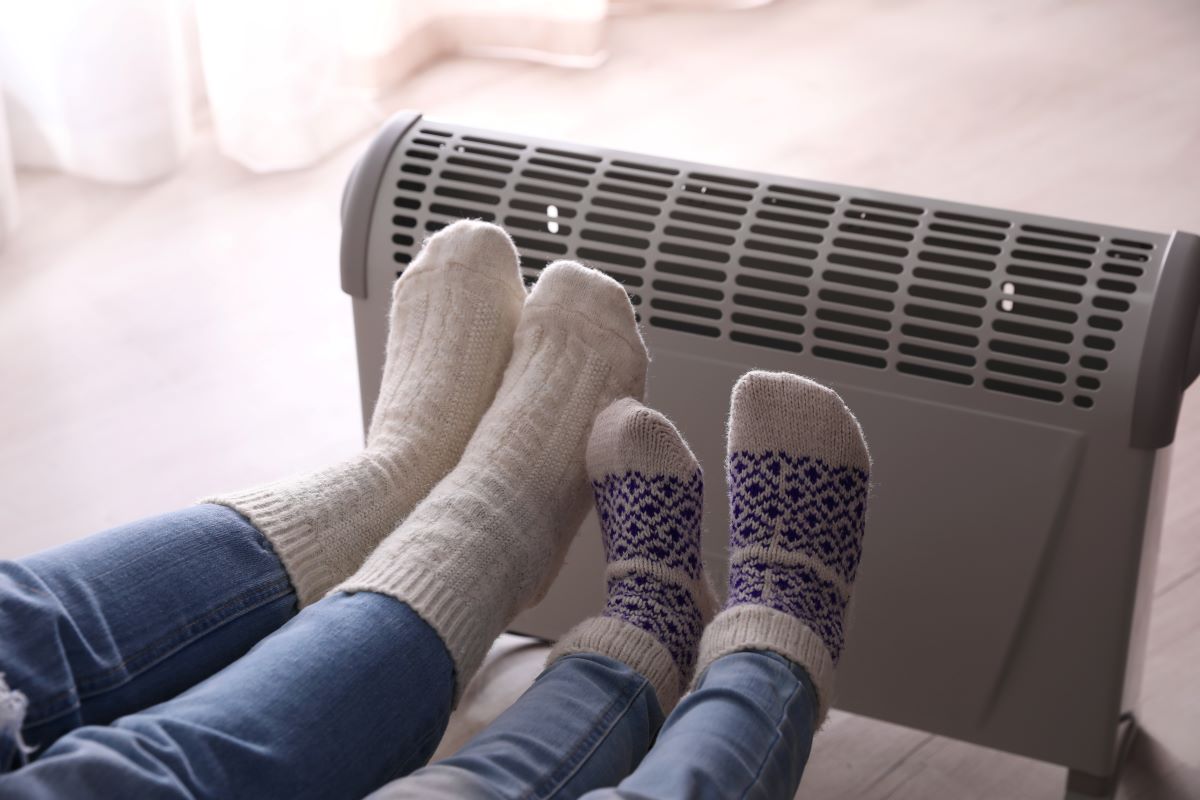Your Questions — 12 minutes
Why do we get cold feet?
Winter temperatures inevitably bring back the unpleasant feeling of cold feet. However, for some people, this sensation occurs year-round, regardless of the outdoor temperature.

To understand what causes cold feet, we need to consider the three main factors that help regulate foot temperature:
- Heat production
- Heat distribution
- Heat loss
Heat production
Our metabolism, or the series of chemical reactions that take place in our cells, generates the heat necessary to maintain our vital functions, regardless of the ambient temperature. Usually, this heat generation is well controlled, allowing us to maintain a body temperature of about 37 °C (98.2 °F) throughout the year. Muscle mass is the main source of heat production, which explains why a little physical activity is a good way to warm up. Shivering, an involuntary muscular response of the body, especially to cold, also helps produce heat.
Several molecules are involved in heat production by the cells, particularly the thyroid hormones. As a result, individuals who suffer from a slowing thyroid gland (hypothyroidism) regularly complain of being cold (and having cold feet), whereas the opposite is true for individuals with hyperthyroidism.
Heat distribution
The heat produced by the chemical reactions, especially in the muscles, is then distributed to all parts of the body by the blood. Therefore, it is not surprising that the feet are the first to become cold since their tissue is located furthest from the heart.
Several factors can hinder the distribution of heat:
Stress
If the bloodstream is what redistributes heat, stress may be partly responsible for cold feet. In stressful situations – we usually think of danger or a serious problem, but dropping temperatures also cause stress – the body reacts by producing adrenaline. This hormone from the catecholamine family, also called the “stress hormone,” causes, among other things, a decrease in the size of blood vessels (vasoconstriction) in the periphery which allow blood (and heat) to flow to important organs, such as the brain and heart. As a result, the feet receive less blood (and heat) and get colder.
Caffeine
It should be noted that caffeine also stimulates the production of adrenaline. Therefore, heavy consumption of coffee or energy drinks containing a lot of caffeine can cause peripheral vasoconstriction and lead to cold feet.
Circulation problems
Last but not least, poor blood circulation, caused by factors such as heart failure or the obstruction of blood vessels in the legs (atherosclerosis/stenosis), can limit blood supply to the feet and cause cold sensations in the extremities.
Raynaud’s phenomenon, also known as Raynaud’s disease or Raynaud’s syndrome, is another blood circulation disorder that affects the extremities, most often the fingers, but sometimes the toes, ears or nose. The affected areas become cold, sometimes white and numb, due to spasms that temporarily reduce blood flow in the small blood vessels (arterioles) that supply the extremities. Raynaud’s phenomenon often accompanies another medical condition, such as scleroderma, rheumatoid arthritis, systemic lupus erythematosus or atherosclerosis. This hypersensitivity of the extremities can occur throughout the year, but is aggravated by the cold.
Heat loss
Similar to a poorly insulated house, feet that are poorly protected against the cold will obviously get cold and cause discomfort. First, good shoes or boots limit heat loss. They should also not be too tight to avoid cutting off blood circulation.
Second, attention should be paid to socks. Since water is an excellent conductor of heat (and cold), wet socks tend to make feet feel cold. Therefore, it is important that they evacuate moisture produced by the foot. People who sweat a lot should look for more breathable fabrics, such as cotton, wool, Gore-Tex or other high-tech fibres.
Finally, it is worth remembering the advice of our mothers from way back: to keep your feet warm, wear a hat! Well, mom had a point. Although it makes up barely 10% of the body’s surface, the head is responsible for 40% of its heat loss!








